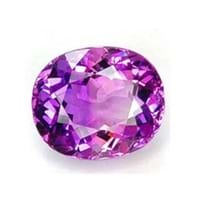Origin
USA, Zambia, Madagascar, India, Sri Lanka, Russia, Australia, Color: violet, purple-violet, Hardness: 7, Refractive index: 1.54 1.55, Density: 2.65 2.66, Chemical composition: SiO2, Crystal structure: hexagonal, Lustre: vitreous, Origins: Widespread; main sources are Brazil, Uruguay, Bolivia, Argentina, USA, East Africa, Zambia, Namibia, Madagascar, India, Sri Lanka, Russia, Brazil, Uruguay, Bolivia, Argentina, Australia, Brazil, Uruguay, Bolivia, Argentina, Australia
Southern and central Africa
Color
Violet, White, Colorless, Blue, Red, Green, Yellow, pink, Violet, pink
Black, Reddish, gray, Red
Streak
White
Black, Brown, Reddish, Red
For which Rashi?
Pisces, Scorpio, Sagittarius, Pisces, Scorpio, Sagittarius, Pisces, Scorpio, Sagittarius
Aries, Aquarius, Aries, Aquarius, Aries, Aquarius
Planet
Not Available
Saturn
Element of Planets
Water
Not Available
Energy
Receptive
Projective
Finger
Not Available
Not Available
Ring Metal
Not Available
Not Available
Not to wear with
Not Available
Not Available
Powers
Love, Courage
Healing
Planetary
Not Available
Not Available
Talisman
Not Available
Not Available
Tenacity
Not Available
Brittle
Solubility
insoluble in common solvents
Not Available
Durability
Not Available
Not Available
Specific Gravity
2.65
5.00-5.30
Fracture
Conchoidal, ConchoidalWalter Schumann, Gemstones of the world (2001)
Uneven, Uneven, ConchoidalWalter Schumann, Gemstones of the world (2001) More from other references, Conchoidal, Brittle
Cleavage
Indiscernible
None, may show partings on {0001} and {10 1 1}
Chemical Composition
SiO2
Fe 2O 3Arthur Thomas , Gemstones (2009)
Luster
Vitreous
Not Available
Pleochroism
None
O = brownish red; E = yellowish red
Transparency
Transparent, Transparent to translucent
OpaqueHerve Nicolas Lazzarelli, Blue Chart Gem Identification (2010) More from other references
Refractive Index
1.544-1.553
2.690-3.220
Optic Character
Not Available
Not Available
Crystal System
Trigonal
Trigonal
Birefringence
0.009
0.280
Clarity
Transparent
OpaqueHerve Nicolas Lazzarelli
Neurological
Not Available
Not Available
Cardiovascular
Not Available
Not Available
Respiratory
Not Available
Not Available
Reproductive
Not Available
Not Available
Digestive
Not Available
Not Available
Psychology
Not Available
Not Available
Healing
Not Available
Not Available
Qualities Associated
Not Available
Not Available
Amethyst Vs Hematite Fracture
Fracture is an important parameter when you compare Amethyst and Hematite Physical Properties. It is necessary to understand the significance of these properties, before you compare Amethyst Vs Hematite fracture. Whenever a gemstone chip breaks, it leaves a characteristic line along its breakage. Such lines are known as fracture and are used to identify the gemstones in their initial stages of production when they are in the form of rough minerals. Fracture is usually described with the terms “fibrous” and “splintery” to denote a fracture that usually leaves elongated and sharp edges. Fracture observed in Amethyst is Conchoidal, ConchoidalWalter Schumann and Gemstones of the world (2001). Hematite fracture is Uneven, Uneven, ConchoidalWalter Schumann, Gemstones of the world (2001) More from other references, Conchoidal and Brittle.









